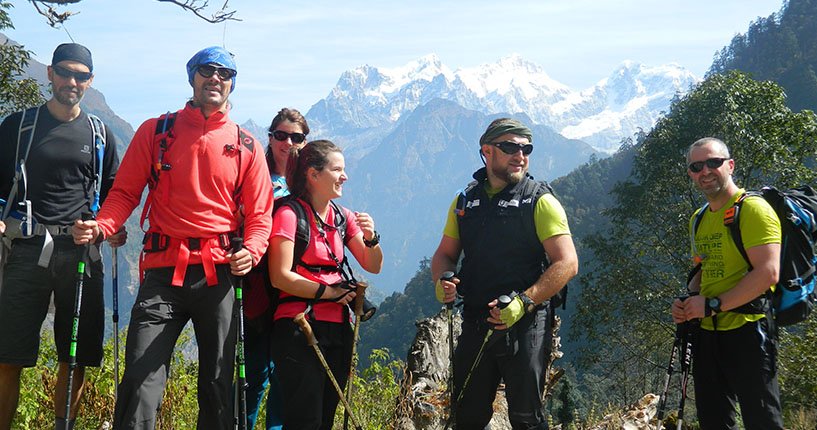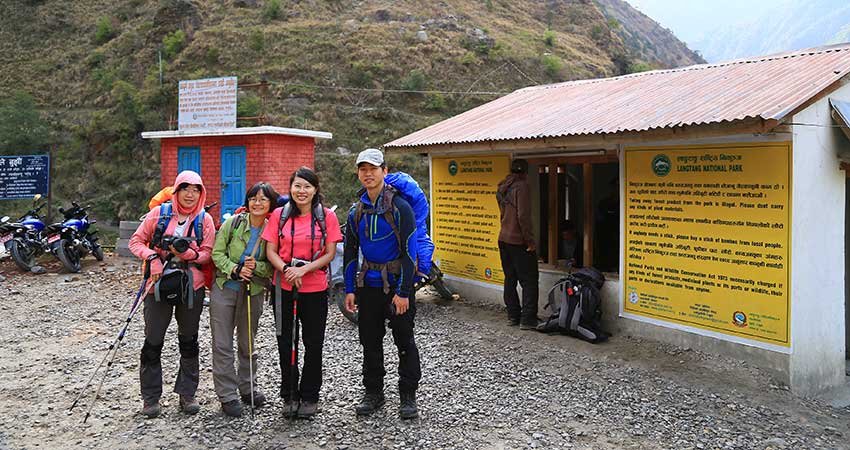Getting top five trekking regions of Nepal

- 21-Oct-2016
- 0
Among many trekking regions in Nepal, which one suits you the best? Or have you been already on some? Well, if you are planning for any treks in Nepal and wondering when to join, this is the time of year (Oct/Nov) when most tourists flock to this beautiful Himalayan kingdom. From short and easy a week long treks to off the beaten path longer camping adventures, from simply either Everest or Annapurna to more diverse treks around foothills of Himalayas, Nepal offers unique and exciting points of interest for any fellow traveler.
Here in this article, we present the top 5 trekking regions in Nepal and info on how to get there, if you are contemplating the idea of coming to this wonderful country.
1. Everest Region:

The name Everest needs no introduction. Suffice to say, the Everest region and the surrounding Khumbu valley have attracted thousands over the years and continues to do so. Second only to the Annapurna region in terms of popular trekking destinations of Nepal, the region offers a rare glimpse of the Sherpa people and their cultures, a trek to the famed Everest Base Camp, a climb to the summit of Kala Patthar, which offers a breathtaking up close view of Mt. Everest and other nearby prominent peaks, and visit to ancient monasteries throughout, to name a few.
How to get there at most of the Everest treks including EBC Trek?
The journey typically starts with a short flight from Kathmandu to Lukla airport, the beginning of our journey into the region. From Lukla we head north towards Namche Bazaar, popularly known as the gateway to Everest, and a Sherpa hold with a mix of modern and old ways. From here on, we enter the Everest country and we are welcomed by rugged beauty of the Khumbu valley and an awe-inspiring moment of being so close with Everest itself. By the time we have completed our journey back to Lukla, we are filled with a sense of achievement and content that only such a trip can invoke.
2. Annapurna Region:

This widely acclaimed trekking route comes off as the first choice of trekking destination in Nepal. Trip length ranges from few days to few weeks, depending on how you want to pan out your chosen route.
How to get there for Annapurna Circuit Trek?
The Annapurna circuit trek takes around three weeks to complete, and begins from the town of Besisahar in Lamjung district, and ending up at the beautiful lakeside city of Pokhara. The region has a relatively well established facility that includes teahouses and lodges at regular intervals. In this trek, you will have the chance to experience the subtropical to the alpine climate, encounter an array of floras and faunas along the route, and of course have an opportunity to get to the heart of the Annapurna range, including the Annapurna Base camp and the famous Thorong La Pass, the highest point on the circuit.
If you are short on time, you have an alternative option of trekking to Poon Hill from Pokhara. Weather permitting, the view from top of Poon Hills offers a stunning view of the entire Annapurna range. You will also be able to observe local Magar and Gurung cultures and their hospitality throughout your trek.
Similarly, Annapurna Base Camp Trek is another popular walk in this region that surrounds you by Himalayas from all directions at base camp. It can be joined or done separately with Poonhill Trek.
How to get there for ABC Trek/ Poon hill Trek?
Simply fly for 20 minutes or take a scenic 6 hours drive from Kathmandu to beautiful city of Pokhara. Pokhara is the must visit site for any tourist, and is the starting point of many Annapurna region treks.
3. Langtang Region:

This is the third most popular trekking destination in Nepal. Despite its proximity to the capital city, it relatively receives less visitors, and in a way this could be a good thing if you are one of those trekkers who prefer the road less traveled. The region shares its border with Tibet, and has a distinctive Tibetan influence.
The Langtang National Park, home to a diversity of animals and plants, many of them endemic to the region, is situated in this region. Other points of interest in the area include the Kyanjin Gompa, an ancient Buddhist monastery, and Gosainkunda Lake, a sacred site to hindus. You can also have a close up glimpse of Langtang Lirung Peak that dominates this region of the Himalayas.
How to get there?
Our trip starts from Kathmandu to Syabrubesi on a bus ride. Then we head towards Langtang valley reaching the famous Kyanjin Gompa. After exploring the region, we retrace our back to Kathmandu via Syabrubesi.
4. Remote Region at Rara Lake:

Situated in the far north-western region of the country, Rara Lake is the biggest lake in Nepal, sitting at an altitude of 2990m. This trek follows an off the beaten track that will offer you a solitude travel along the less frequented paths of the far west Nepal. It is also an opportunity to experience cultures and sceneries which are distinct from other trekking destinations in Nepal. You will trail through the pristine forests of Pine, Rhododendron, Juniper, Oak, etc. on the way with several alpine meadows frequenting the path. Finally, you will be greeted with an unspoiled serene lake mirroring the distant snow-clad Himalayan peaks. A truly breathtaking moment to behold when you get there. Adding to its natural beauty, this place is also a haven for bird watchers.
How to get there?
In order to get there, our trip will take us on a flight from Kathmandu to Nepalgunj, followed by a second flight to Jumla. From here on, we will trek our way to the Lake. In this trek, logistics are a bit of an issue, so we will be camping overnight (mostly) and will be carrying our own supplies for the team, including our meals, although a few outposts along the way may provide room and board.
5. Region beyond Himalayas - Upper Mustang:

This region comprises the northern part of Mustang district, bordering Tibet. Here we come across an undisturbed Tibetan culture and way of life combined with a stark beauty of the Himalayan desert. The region was relatively isolated from the outside world until the early nineties, and this fact is reflected in its culture and architecture, which has basically remained the same since centuries. At the heart of this rugged and barren landscape lies the walled city of Lo Manthang, once the capital of the ancient Kingdom of Lo. This city or more properly a village is mostly known for its tall white washed mud brick walls, gompas and its former King's Palace, a nine-cornered, five story structure built around 1400.
Upper Mustang lies in a rain shadow region, behind the Annapurna and Dhaulagiri ranges. This allows for an off-season trekking even during the monsoons, when most of other trekking routes in the country are unsuitable for trekking.
How to get there?
You will need special trekking permit to visit the region. Our journey to the regions begins with a flight or drive from Kathmandu to Pokhara, followed by a next day flight to Jomsom. Then we head for Kagbeni, either by trekking or hiring a jeep. The trek begins and ends in Kagbeni, and takes around 9-10 days to complete. Finally we return Pokhara and then to Kathmandu.
In summary, these are the top 5 trekking regions in Nepal. Are you still looking for more information, tips, costs and dates? Contact us now. We will turn your travel plan into action, once in a life time of adventure.




